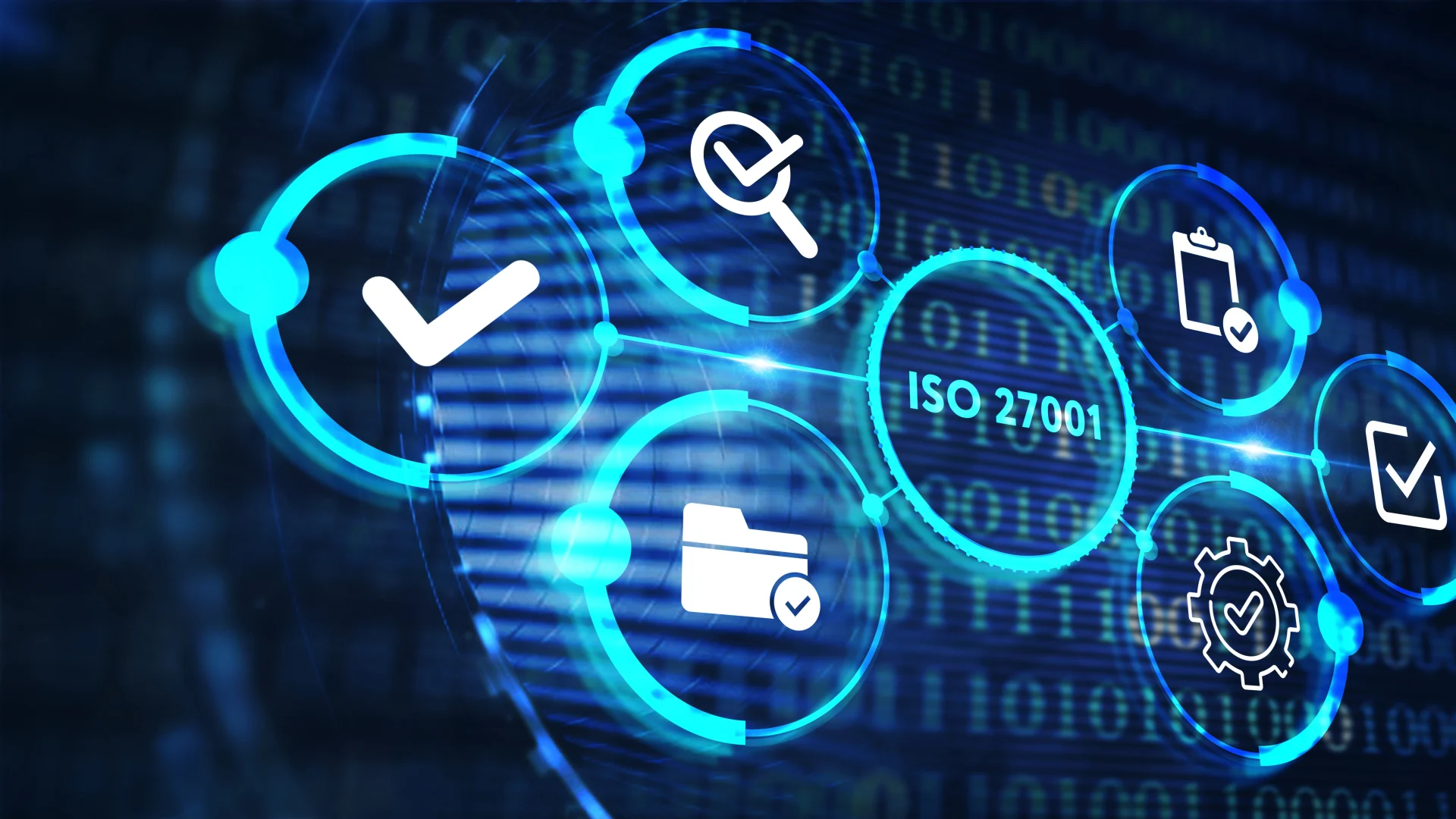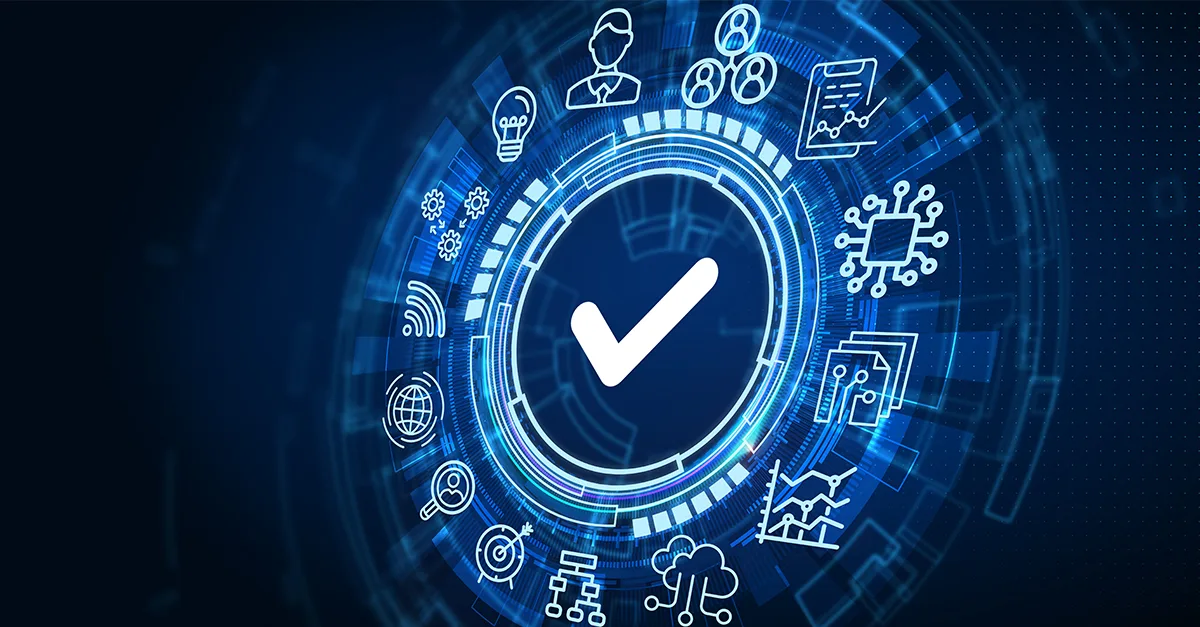ISO 27001 management system
The ISO/IEC 27001 certificate indicates a reliable and secure management system.. We work as an advisor in the certification process of your information security management system and suggest concrete improvements that will help you meet the standard.
Read below more about the requirements of the ISO 27001 standard.
Why should a company obtain ISO/IEC 27001 certification for its information security management system?
An information security management system (ISMS) covers the rules and practices for an organization’s information security management. It aims at maintaining the confidentiality of the organization’s data assets and preventing the data becoming lost or compromised.
The ISO 27001 certificate demonstrates that the company has taken the necessary actions in order to ensure the effective management and protection of its data. Good information security management according to international standards is a significant competitive advantage. As an indication of trust, it benefits companies regardless of their size or industry. With the certification, a company can communicate to its current as well as potential customers that the services it provides are safe.
Obtaining ISO 27001 certification is not only an indication of the organization’s good information security management toward customers. In addition, by complying with the standard, the organization protects its data assets against external threats as well as ensuring the integrity and availability of the data. The certificate demonstrates to the company’s leadership and its various stakeholders that the information security management system adheres to international standards. Furthermore, it proves that the management system lays a solid foundation for the company’s business and its internal operations.
ISO 27001 gap analysis maps out the current status of your management system
Our ISO 27001 gap analysis helps you assess compliance with the standard requirements. As needed, we can provide expert assistance with your company’s ISO 27001 project and suggest concrete actions for obtaining the certification.
Depending on the scope of the management system, the ISO 27001 gap analysis can be completed in 1 to 6 weeks. Once the analysis is complete, we will prepare a project plan for implementing the standard and estimate the implementation costs. The gap analysis involves assessment of the organization’s current status in relation to the requirements in ISO 27001 clauses 4 to 10 as well as to the controls in ISO 27001 Annex A.
Annex A defines 93 controls that are divided into four themes.
They include:
Information security policies
Organization of information security
Human resource security
Asset management
Access control
Cryptography
Physical and environmental security
Operations security
Communications security
System acquisition, development, and maintenance
Supplier relationships
Information security incident management
Information security aspects of business continuity management
Compliance
The ISO 27001 standard requires the evaluation of the security controls based on risk assessments rather than compliance with every control presented in Annex A. It may be that some of the controls are not relevant for the company and, therefore, are not necessary to consider in the gap analysis.
The end result of the gap analysis is an overview of how the different controls are being currently implemented and an implementation plan that includes a cost estimate. Then, the actual implementation stage can start. Ultimately, the measures aim at approval by an external party and ISO 27001 certification after fixing the possible gaps. However, the work does not end there, as the ISO 27001 standard also requires the continuous development of the management system as part of the organization’s normal operations.




